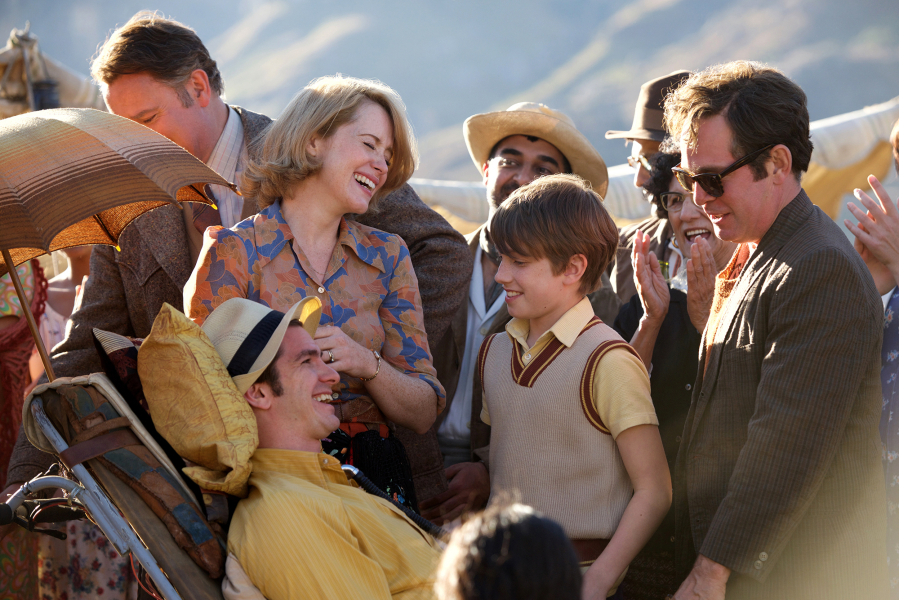‘Breathe” is meant, no doubt, as a sincere homage to the late disability advocate Robin Cavendish, who died, after living with polio for 36 years, in 1994.
Commissioned by his son, producer Jonathan Cavendish — who plays a minor role in the film — and directed by Jonathan Cavendish’s business partner, actor Andy Serkis, the movie has the tone of a eulogy delivered by a dutiful son: affectionate, complimentary and maudlin. The story by screenwriter William Nicholson (“Everest”) jumps from one major episode in Robin’s life to another, but with none of those episodes delving into his interior life, “Breathe” remains a superficial tear-jerker.
The tale begins in the late 1950s, with Andrew Garfield playing Robin as an athletic, dashing adventurer. Robin woos Diana (Claire Foy), and after they marry, they fly to Kenya on business. But after Diana announces her pregnancy, tragedy strikes, as her 28-year-old husband collapses, becomes paralyzed and can only breathe with the assistance of a mechanical ventilator. Upon returning to England, Robin grows depressed, yearning for death, but Diana will have none of it. Ignoring the warnings of his doctor, Robin — with Diana’s help — leaves the confines of the hospital.
From this point forward, “Breathe” follows Robin as he pushes for more and more freedom, ultimately designing — with the help of his inventor friend Teddy (Hugh Bonneville) — a line of mechanical chairs for the severely disabled.



